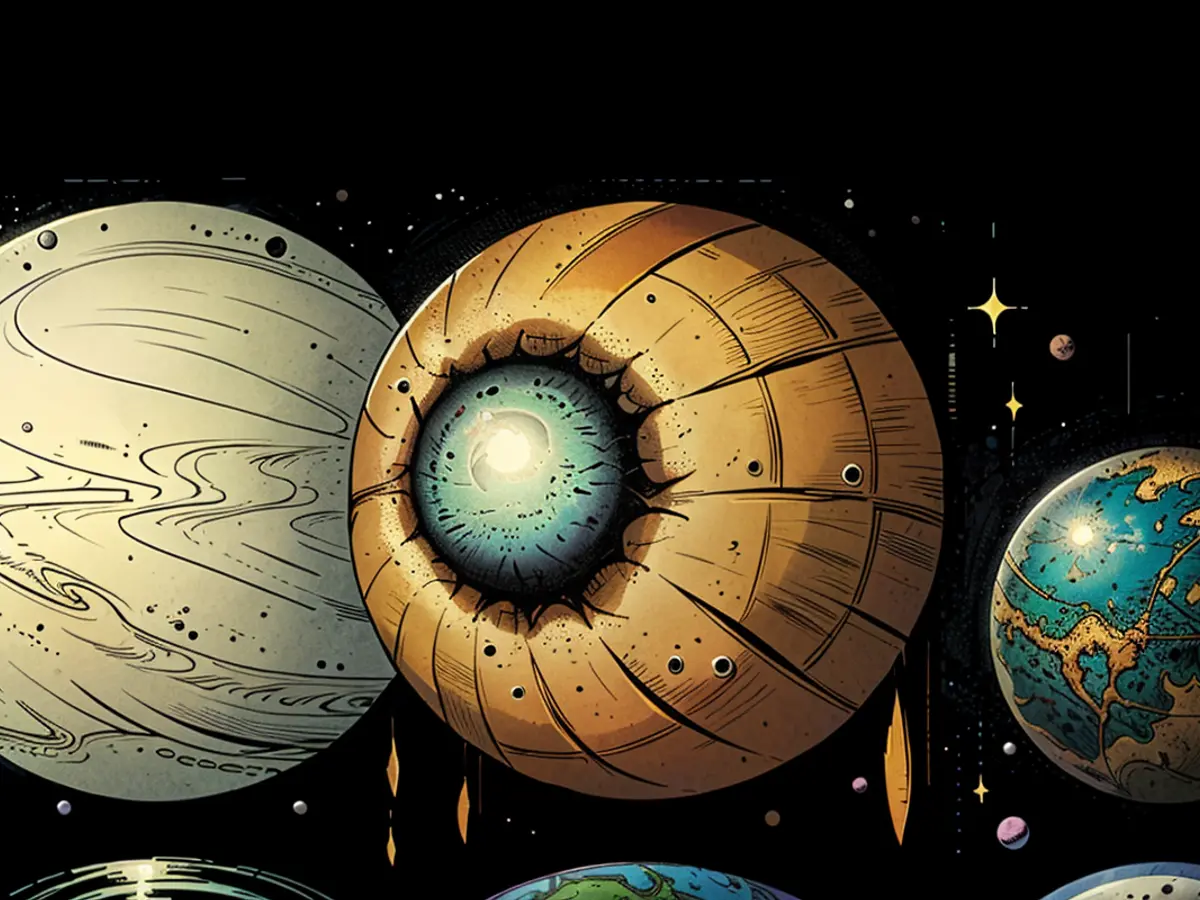An apple planet could be an oasis of life
The Exoplanet LHS-1140b is likely better suited for the development of life than previously assumed. New observations with the James-Webb Space Telescope suggest this distant world may be more habitable than thought, according to researchers in a study.
A fascinating celestial body is drawing attention in space research: The Exoplanet LHS-1140b, discovered in 2017. Recent studies with the James-Webb Space Telescope (JWST) indicate that this distant world may be more habitable than previously assumed, as scientists write in a study.
LHS-1140b orbits around 48 light-years away from Earth in the constellation of the Whale, around a red dwarf star that is only about a fifth the size of our Sun. The planet itself has a 1.73-times larger radius than Earth but is almost six times its mass and is classified as a "super-Earth." Up to 10-20% of its mass could be composed of water.
What's particularly interesting is the planet's position in the habitable zone of its star, where temperatures are mild enough for liquid water to be possible on its surface. Astrophysicist Charles Cadieux of the University of Montreal, the study's lead author, said in a University statement, "LHS-1140b could offer the best chance to 'someday indirectly demonstrate the presence of liquid water on the surface of a distant exoplanet outside our solar system.'" The new study has already been accepted by the journal "Astrophysical Journal Letters" and is available on the preprint server arXiv.
An Ice-Free Haven of Life?
Data from the James Webb Space Telescope, combined with earlier observations of the planet, suggest that LHS-1140b is covered by a global ocean that is mostly frozen. Due to the planet's synchronous rotation, a region of approximately 4,000 kilometers in diameter could remain ice-free, according to the researchers.
At the ice-free spot on its surface, temperatures could be around 20 degrees Celsius - a potentially life-friendly oasis in an otherwise inhospitable environment. A representation of the planet, released by the University, shows how it would resemble a giant eye in this scenario.
Another significant aspect is the planet's atmosphere: The James-Webb Space Telescope detected nitrogen in the planet's atmosphere, indicating the presence of a secondary atmosphere. This atmosphere forms after a planet's initial formation through processes such as volcanism, chemical reactions, erosion, or the influence of life. The presence of nitrogen could also be a sign of an atmosphere that could support liquid water.
Searching for Greenhouse Gases
Favorable for the development of life is also the fact that the home star of LHS-1140b seems less active than other stars with exoplanets in the habitable zone. Whether the planet is an ice giant or has a partially liquid ocean on its surface can only be determined by further observations. Another sign of a warm ocean would be the detection of greenhouse gases such as carbon dioxide.
We need at least another year of observations to confirm that LHS 1140b has an atmosphere, and probably two or three more, to detect carbon dioxide, said co-author René Doyon. This is not easy and reaches the technical limits of the James-Webb Space Telescope. The planet may even need to be observed for several more years at every available opportunity to determine if it has habitable surface conditions, the researcher added.
The James Webb Space Telescope's discoveries have significantly contributed to the field of astronomy, providing new insights about the potential habitability of exoplanets like LHS-1140b. These advancements in space exploration are also opening up opportunities for education and public engagement in the search for extraterrestrial life.
Given the James Webb Space Telescope's capabilities, future observations could potentially reveal the presence of greenhouse gases on LHS-1140b, further suggesting the possibility of life-friendly conditions on this exoplanet. The detection of such gases would be a significant step in our ongoing quest to understand the universe and the potential for life beyond Earth.
As we continue to explore the universe with tools like the James Webb Space Telescope, discussions about the existence of extraterrestrial life and the role of astronomy in education become increasingly relevant and intriguing. The scientific community's excitement and determination to uncover the secrets of space, such as the potential habitability of exoplanets, continue to inspire us all.







